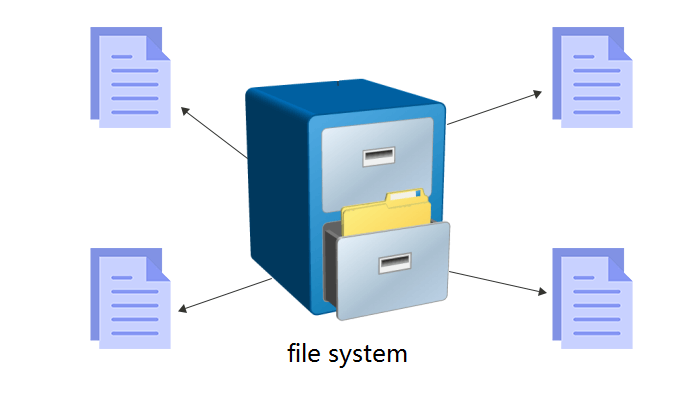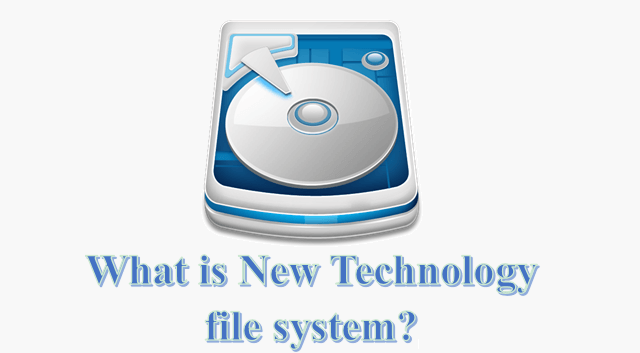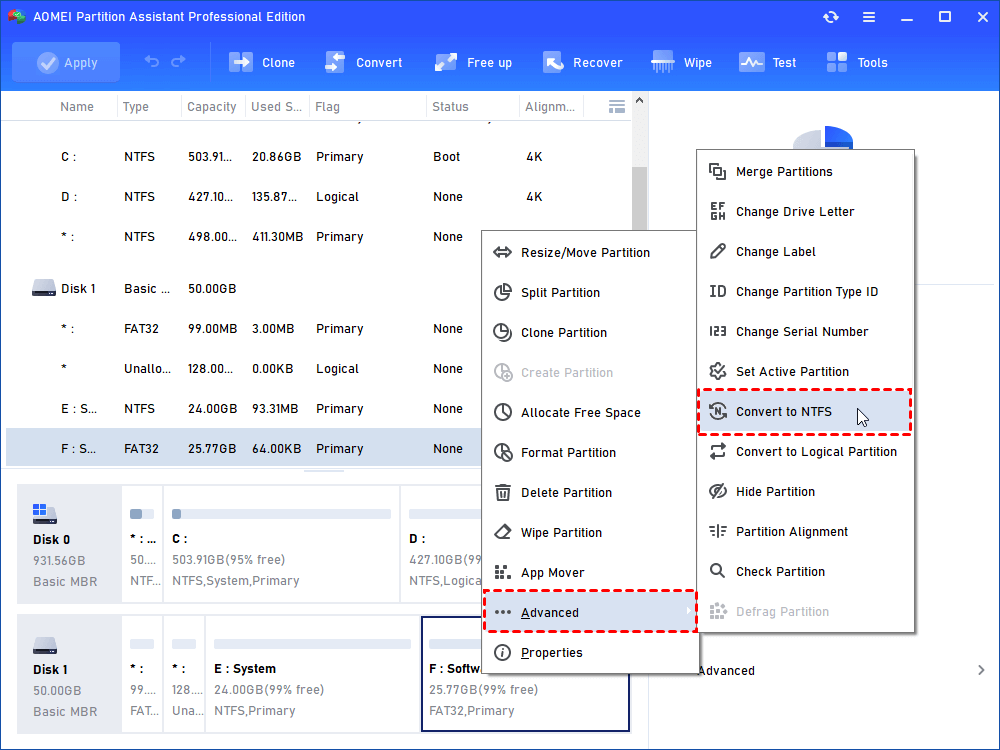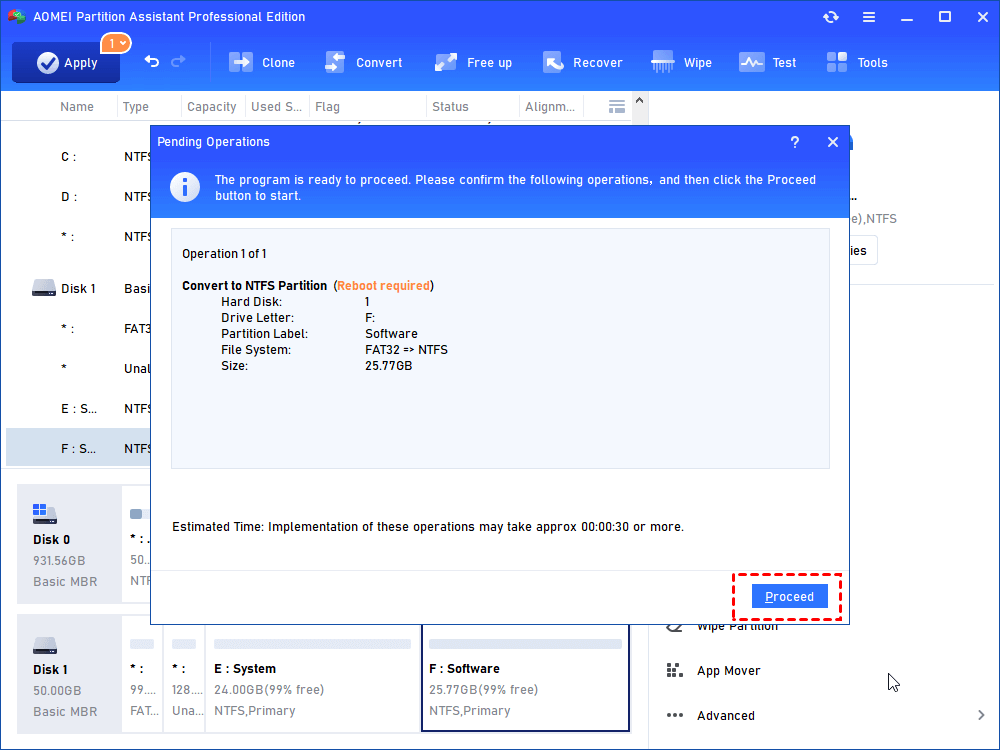What is New Technology File System (NTFS)?
What is new technology file system? This article will give you a brief introduction of the NTFS file system.
Content
About file system
A file system controls the way of storing and retrieving data on a hard disk. It provides an approach for operating system to separate data into pieces and assign a name for each one. So the system can easily find a file and tell where it begins and stops. Without a valid file system structure, the partition may show file system raw and can't find a file. It is like a file cabinet that organizes a mess of file and pater by a certain structure or rule, so you can easily get what you want.
There are lots of file system, such as FAT32, NTFS, exFAT. Each one has distinctive features, making the way to read, modify, dump files in various ways. And generally, FAT32 and NTFS are 2 types of files systems that is widely used for Windows systems. But NTFS file system is developing rapidly and gradually replacing the FAT32.
How does it happen? And how to choose a file system between FAT32 and NTFS? Is there a way to change FAT32 file system to NTFS in Windows?
Next, we will introduce the new technology file system (NTFS) and tells you why so many people employ this file system for their hard drives, as well as demonstrate how to convert FAT32 to NTFS.
What is new technology file system (NTFS)?
NTFS, which is abbreviation for new technology file system, is the new generation file system developed by Microsoft. And NTFS has several improvements over traditional Windows operating system-FAT16, FAT32 and HPFS in performance, security, space utility. Now it is default file system for windows 10, 8, 7, and many other Windows operating system.
How does new technology file system works?
When your drive is formatted with NTFS file system, the operating system tracks all files by separating the drive into different partitions. And a file is usually saved in one or more clusters in a uniform size.
In NTFS, the size of cluster ranges from 512 bytes to 64 kilobytes. And you can control a cluster size according to the balance of disk space utilization and the number of required disk accesses. Usually, a large hard disk comes along with large default cluster size if you prefer high performance that would decrease some space efficiency.
Features of new technology file system
Compared with other old file systems like FAT 16, FAT32, NTFS gives users a good number of advantages and features:
● Large file system and partition number support: Actually, it does not have realistic limit on file size and partition number. But compared with FAT32 that only supports a maximum partition of 32GB, and a file can’t be over 4GB in FAT32. If you clone a large file to a FAT32 drive, you would recieve a message that the file is too large for the destination file system.
● High security: It enables you to encrypt a file or folder to decide who can access the file.
● Compressing function: NTFS file system can help you to compress files and folders, or the whole NTFS partition to save disk space so you can make best use of it.
● Journaling file system: NTFS is a journaling file system. It writes a log for changes when save a change on a file. if you need, you have a chance to revert that file to previous condition.
● Backup function: NTFS will back up automatically file that currently being used. If the power or system fails, your data would not lose.
Drawbacks of NTFS file system
It is worth mentioning that NTFS has drawbacks. As a new technology, it does not always work well with in some old operating systems, and it is available for Windows 10, 8, 7, Vista, XP, and Windows 2000, Windows NT.
And Mac OS can read files in NTFS, but it is unable to directly write any data to it. Besides, many electronic devices, like DVD, CD, PS can't read NTFS.
How to convert to the new technology file system-NTFS?
Since NTFS has so many advantages, you may want to convert FAT32 file system to NTFS. To switch a file system, you might try to format a drive to NTFS. You can do this, but you will lose all data. Here, we will introduce a method to perform this operation without data loss.
You can turn to a disk management tool-AOMEI Partition Assistant Professional. It allows you to switch from FAT32 to NTFS, or NTFS to FAT32 file system without formatting. Whatever storage devices you are using, such as USB drive, SD card, hard disk, you can easily change the file system with it.
Now you can download the demo version firstly to see how to use this converter.
Step 1. Launch AOMEI Partition Assistant, click a FAT32 partition, move mouse to “Convert” and choose “Convert to NTFS/FAT 32”.
Step 2. And click “OK” in this small window.
Step 3. And click “Apply” > “Proceed” to execute the operation.
Wait for the process to get finished. With this tool, you don’t need to worry about data loss. And it offers other features to help you to manage your partitions and disks. It is able to create an NTFS partition, and to format a drive to other file systems, like exFAT, Ext 2, 3, 4.
And if you are using Windows Server system, please turn to AOMEI Partition Assistant Server.
Conclusion
New technology file system is a good choice for Windows 10, 8, 7 and other Windows operating system. It is highly recommending to convert your file system to NTFS if the system works well with it.






